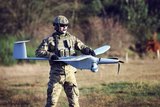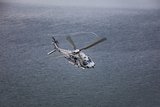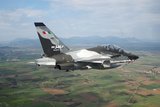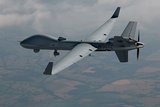USMC turns to augmented reality for better Osprey pilot safety
The USMC will use the Degraded Visibility Landing System with its MV-22B Osprey tiltrotor aircraft. (Photo: L3Harris Technologies)
The USMC has selected augmented reality (AR) technology in a lightweight display and processor from L3Harris Technologies, to mitigate safety risks for MV-22B Osprey pilots in brownouts and other limited-visibility conditions.
The Degraded Visibility Landing System (DVLS) increases situational awareness when landing in reduced visibility landing conditions, the company noted in an 11 August announcement, while the helmet-mounted display and processor integrates into fixed and rotary-wing aircraft such as the CH-53, H-1, H-60 and C-130.
DVLS fuses navigational and sensor data sources with AR to produce a real-time display on a helmet-mounted, flip-down display ‘for an accurate representation of the surrounding terrain and potential flight obstructions’, L3 Harris added.
The system also complies with Future Airborne Capability Environment standards, enabling new sensors and systems to be integrated.
Related Equipment in Defence Insight
More from Air Warfare
-
![Portugal signals interest in establishing A-29N final assembly line]()
Portugal signals interest in establishing A-29N final assembly line
As the launch customer for the NATO-configured variant, Portugal also took delivery of the first five A-29N aircraft from its order for 12, placed in 2024.
-
![Leonardo signs contract on Austria’s M-346 aircraft order]()
Leonardo signs contract on Austria’s M-346 aircraft order
The first of the 12 M-346 aircraft are expected to be delivered to the Austrian Air Force by 2028, according to the company.
-
![2025 UAV market review: $7.8 billion in new contracts signed as US leads spending]()
2025 UAV market review: $7.8 billion in new contracts signed as US leads spending
Qatar and Indonesia followed the US’s high spending on new uncrewed aerial vehicle contracts across 2025, while MALE and micro drones and loitering munitions were particularly popular subcategories this year.





















